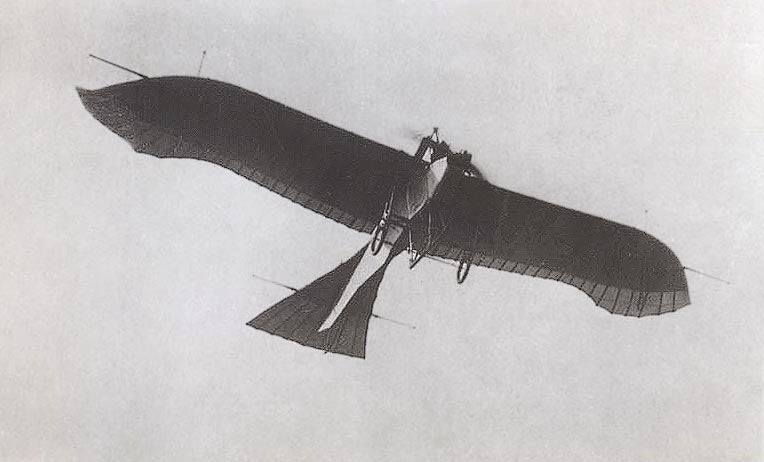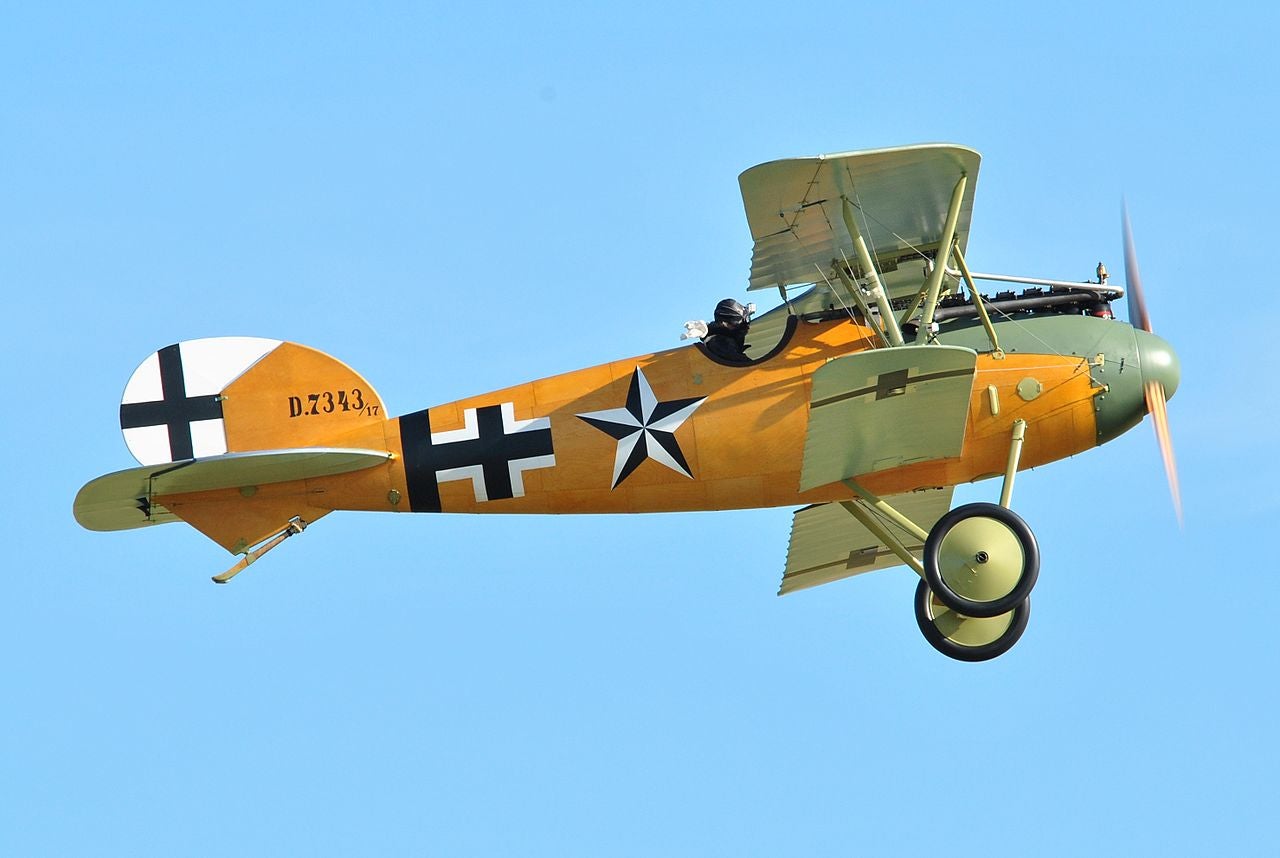 "ttyymmnn" (ttyymmnn)
"ttyymmnn" (ttyymmnn)
02/26/2016 at 13:25 • Filed to: Planelopnik, Planelopnik history
 8
8
 6
6
 "ttyymmnn" (ttyymmnn)
"ttyymmnn" (ttyymmnn)
02/26/2016 at 13:25 • Filed to: Planelopnik, Planelopnik history |  8 8
|  6 6 |
Welcome to This Date in Aviation History , getting you caught up on milestones, important historical events and people in aviation from February 24 through February 26.
!!! UNKNOWN CONTENT TYPE !!!
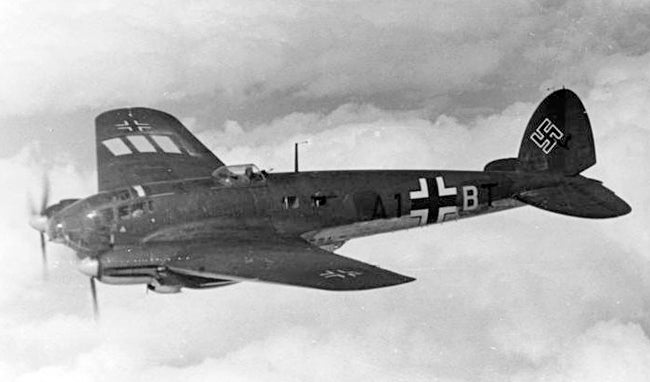
February 24, 1935 – The first flight of the Heinkel He 111. One of the provisions of the !!!error: Indecipherable SUB-paragraph formatting!!! that ended WWI was that Germany was not allowed to have an offensive air force. But once Adolf Hitler assumed the role of German Chancellor in 1933, he immediately set about rebuilding the German Luftwaffe, though at first in secret, training new pilots in Russia and disguising new warplanes as civilian airliners. The He 111 traces its development back to the early 1930s. !!!error: Indecipherable SUB-paragraph formatting!!! , head of !!!error: Indecipherable SUB-paragraph formatting!!! , wanted to build the world’s faster passenger plane, so he had two of his designers, Siegfried and Walter Günter develop the !!!error: Indecipherable SUB-paragraph formatting!!! , a 4-passenger, single engine aircraft with elliptical wings that set numerous speed records. But in order to compete with American designs such as the !!!error: Indecipherable SUB-paragraph formatting!!! and !!!error: Indecipherable SUB-paragraph formatting!!! , Heinkel needed a larger aircraft, so developed a twin-engine version of the Blitz, which was called the Doppel-Blitz , or Double Blitz, and this is the aircraft that became the wartime He 111. Development of the He 111 continued under civilian registrations and the first prototype of the He 111 (D-ALES) received recognition as “the fastest passenger aircraft in the world” when its speed exceed 250 mph. Ultimately, Lufthansa operated 12 He 111s on routes throughout Europe and even as far as South Africa. But it was as a bomber that the He 111 is best known, and it dropped its first bombs during the !!!error: Indecipherable SUB-paragraph formatting!!! . Germany used the Spanish conflict as a test for its budding air force, and the He 111 flew in support of the Nationalist government, most famously in the !!!error: Indecipherable SUB-paragraph formatting!!! of the city of Guernica, one of the first times bombs were dropped on a defenseless civilian population. Based on experiences in Spain, and the ability of the He 111 to outrun all Spanish fighters, Heinkel believed that the minimal defensive armament on the 111 was sufficient. However, during the !!!error: Indecipherable SUB-paragraph formatting!!! , the He 111 began to show its vulnerability. Though fast when it was first built, it was no match for the faster British fighters, nor was it very maneuverable. And its light defensive armament made it a relatively easy target for British guns. But with no new bomber to take its place, the He 111 soldiered on, and served throughout the war on all fronts, though it was essentially obsolete by 1942. Still, the He 111 was constantly upgraded and modified until production ended in 1944. The 111 served as a torpedo bomber, troop transport, reconnaissance aircraft, pathfinder and glider tug. It was even modified to carry out aerial launches of the !!!error: Indecipherable SUB-paragraph formatting!!! . Ultimately, more than 6,500 civilian and military 111s were produced. Following the war, the He 111 continued to be built under license in Spain as the !!!error: Indecipherable SUB-paragraph formatting!!! . Powered by a Rolls-Royce Merlin engine, some of these aircraft operated into the early 1970s. (Bundesarchiv photo via !!!error: Indecipherable SUB-paragraph formatting!!! )
!!! UNKNOWN CONTENT TYPE !!!
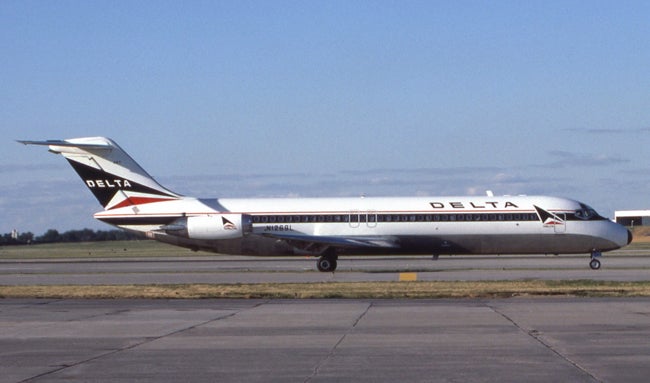
February 25, 1965 – The first flight of the McDonnell Douglas DC-9. When the jet engine took over from the propeller engine following WWII, initial development of airliners by the likes of de Havilland, Boeing and Douglas focused on large aircraft powered by four turbojet engines. But it soon became clear that while high capacity was good, there was also a need for smaller aircraft to carry fewer passengers on short- to medium-range flights operating from smaller airports. At first, Douglas entered into an agreement with !!!error: Indecipherable SUB-paragraph formatting!!! of France to sell the !!!error: Indecipherable SUB-paragraph formatting!!! , but when orders for the airliner didn’t materialize, Douglas decided to forge ahead on its own. Thus, it may not be a coincidence that the DC-9 bears such a strong resemblance to the Caravelle. After the DC-9's first flight in 1965, Douglas delivered it to launch customer Delta Air Lines in December of the same year. But Douglas planned from the beginning that the DC-9 would be the first in a series of aircraft, and quickly followed the initial Series 10 with the -20, -30 and -40 variants, with the final -50 variant taking its maiden flight in 1974. With each successive variant, the airliner gained more seats, more powerful engines, a longer fuselage and larger wings. The initial production version of the DC-9-10 was powered by a pair of !!!error: Indecipherable SUB-paragraph formatting!!! low-bypass turbofan engines and seated 90 passengers in a one class configuration. The -30, -40 and -50 variants saw passenger capacities increase to 115, 125, and 139 passengers respectively. The maximum takeoff weight (MTOW) of 82,000 lbs for the -10 was steadily increased to 121,000 lbs for the -50. But Douglas wasn’t done yet. Following the -50 series, continuous development of the DC-9 resulted in the !!!error: Indecipherable SUB-paragraph formatting!!! series, !!!error: Indecipherable SUB-paragraph formatting!!! series and, after the McDonnell Douglas and Boeing merged in 1997, the !!!error: Indecipherable SUB-paragraph formatting!!! . The DC-9 family of aircraft has been remarkably successful, ranking third in the total number of aircraft produced behind the !!!error: Indecipherable SUB-paragraph formatting!!! (over 8000 produced) and the !!!error: Indecipherable SUB-paragraph formatting!!! family (over 6000 produced). Production ended in 2006 after 41 years with the final 717 delivered to AirTran Airlines. In addition to its commercial service, the DC-9 was also flown by the US military with the designation !!!error: Indecipherable SUB-paragraph formatting!!! . It was produced as the C-9A Nightingale, a medical evacuation aircraft, for the Air Force, and the C-9B Skytrain II passenger/transport version for the US Navy and Marine Corps. (Photo by John Proctor via !!!error: Indecipherable SUB-paragraph formatting!!! )
!!! UNKNOWN CONTENT TYPE !!!
For plane spotters, it can be difficult to differentiate between all the different major variants of the DC-9 series. Here’s a quick primer:
DC-9 series: Short fuselage, no !!!error: Indecipherable SUB-paragraph formatting!!! under the cockpit, pointy tail. (The last DC-9 variant, the DC-9-50, was equipped with strakes, but it retained the cone-shaped tail.)
MD-80 series: Longer fuselage, strakes under the cockpit, pinch tail, skinny engines.
MD-90 series: Longer fuselage, strakes under the cockpit, pinch tail, fat engines.
B717: Shorter body, no strakes under the cockpit, pinch tail, fat engines.
Basically, you can tell the DC-9-10/20/30/40/50 from the 717 by the tail cone, and the MD-80 series from the MD-90 series by the size of the engines.
!!! UNKNOWN CONTENT TYPE !!!

February 26, 1979 – Production of the Douglas A-4 Skyhawk ends.
The Skyhawk took its maiden flight in 1954 and, by the time production ended 26 years later, a total of 2,690 copies of the small, nimble, and versatile fighter had been produced by Douglas. The last A-4, an A-4M Skyhawk II, was delivered to Marine squadron VMA-331. The Douglas Aircraft Corporation originally developed the Skyhawk as a small, carrier-based airplane capable of delivering nuclear weapons, one that would replace the
!!!error: Indecipherable SUB-paragraph formatting!!!
. In fact, the A-4 was so small that its wings did not need to be folded for carrier storage, and the final aircraft weighed half of what the Navy specified for the new airplane. The Skyhawk was designed by famed Douglas engineer
!!!error: Indecipherable SUB-paragraph formatting!!!
, and became known as “Heinemann’s Hot Rod” by pilots who were impressed with its speed and performance. Pilots also nicknamed it the “Bantam Bomber,” “Mighty Mite” and “Scooter.” First powered by a
!!!error: Indecipherable SUB-paragraph formatting!!!
, then a
!!!error: Indecipherable SUB-paragraph formatting!!!
beginning with the A-4E, the diminutive Skyhawk had a top speed of 670 mph. And though it was small, the Skyhawk packed a heavy punch. In addition to its two 20mm cannons, the A-4 could carry nearly 10,000 lbs of external bombs, more than a WWII-era
!!!error: Indecipherable SUB-paragraph formatting!!!
. The Skyhawk also pioneered the concept of “buddy refueling,” where one aircraft could refuel another of the same type in flight, removing the need for dedicated tanker aircraft. Following delivery to the Navy and Marine Corps in 1956, the A-4 first saw combat with the US Navy during the Vietnam War, launching its first air raids on North Vietnam in August of 1964. Skyhawks also found distinction with the Israeli Air Force in the
!!!error: Indecipherable SUB-paragraph formatting!!!
and with the Argentine Air Force during the
!!!error: Indecipherable SUB-paragraph formatting!!!
. Other international customers included Kuwait, Australia, New Zealand, Indonesia, Malaysia, and Brazil. After the Skyhawk was retired from US Navy fleet duty, it found a new lease on life as an adversary aircraft at the Navy’s
!!!error: Indecipherable SUB-paragraph formatting!!!
(commonly called Top Gun). The A-4 was chosen as the bandit aircraft because of its small size, maneuverability and smokeless trail, similar to a
!!!error: Indecipherable SUB-paragraph formatting!!!
. It served in this aggressor role until 1999. In 1974, the the Navy’s
!!!error: Indecipherable SUB-paragraph formatting!!!
demonstration squadron chose the Skyhawk as their new demonstration aircraft when they transitioned from the
!!!error: Indecipherable SUB-paragraph formatting!!!
, a plane that was much larger and more costly to operate. The smaller and lighter aircraft, with a tighter turning radius, allowed for a more dynamic flight demonstration. The Blues flew the Skyhawk until 1986. The US Navy retired the last of its operational A-4s in 2003.
(US Navy photo)
!!! UNKNOWN CONTENT TYPE !!!
Short Take Off
!!! UNKNOWN CONTENT TYPE !!!
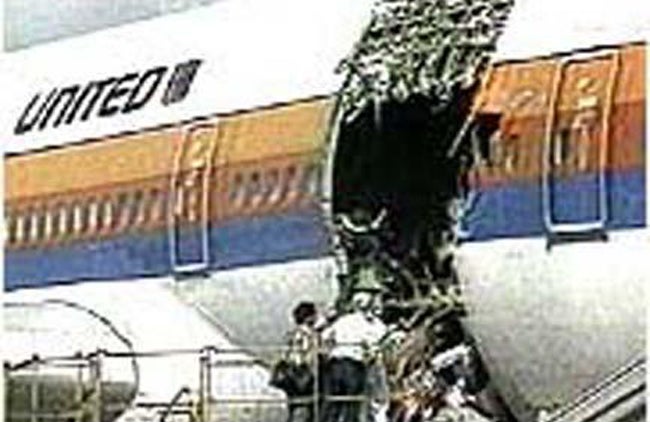
February 24, 1989 – The forward cargo door blows off of United Airlines Flight 811. UAL 811 was a regularly scheduled !!!error: Indecipherable SUB-paragraph formatting!!! that had taken off from Honolulu, Hawaii for a flight to Auckland, New Zealand when the forward cargo hatch, which had been improperly closed, blew off while passing between 22,000 and 23,000 feet. As the door broke off, it took a large section of the cabin wall with it, and the ensuing explosive decompression caused the floor to buckle and sucked 10 seats and 8 passengers out of the aircraft. The ensuing investigation found that damaged locking pins on the door gave a false reading of the door’s being shut properly, and both United and the ground crew were faulted. (NTSB photo)
!!! UNKNOWN CONTENT TYPE !!!
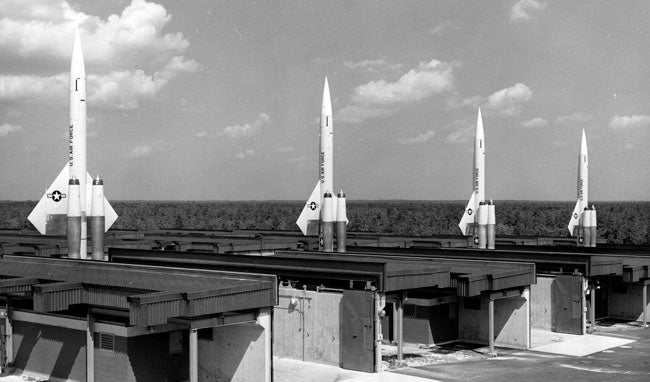
February 24, 1955 – The first flight of the CIM-10 BOMARC surface-to-air missile,
a long-range supersonic surface-to-air missile used by the United States during the
!!!error: Indecipherable SUB-paragraph formatting!!!
for the defense of North America. The BOMARC (an acronym of
!!!error: Indecipherable SUB-paragraph formatting!!!
and
!!!error: Indecipherable SUB-paragraph formatting!!!
) had an operational radius of 200 miles and was designed to fly at Mach 2.5-2.8 at 60,000 feet. It could be armed with either a conventional or nuclear warhead. The USAF ultimately set up 16 BOMARC sites armed with 56 missiles each. With the advent of the intercontinental ballistic missiles, attacking bombers were no longer perceived as a threat, and the BOMARC was retired in 1972.
(US Air Force photo)
!!! UNKNOWN CONTENT TYPE !!!
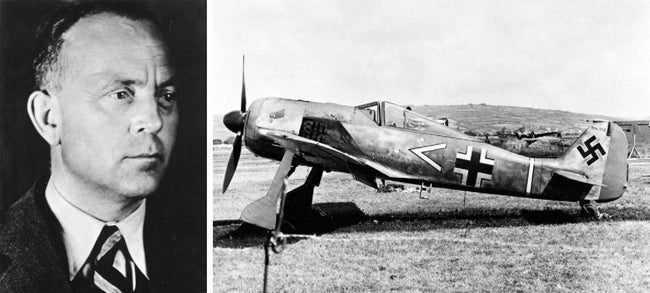
February 24, 1898 – The birth of Kurt Tank,
a German aeronautical engineer and test pilot who headed the design department of
!!!error: Indecipherable SUB-paragraph formatting!!!
from 1931-1945. After working for
!!!error: Indecipherable SUB-paragraph formatting!!!
following WWI, Tank began working for Focke-Wulf when Albatros went bankrupt and merged with FW. In 1931, Tank oversaw the development of the
!!!error: Indecipherable SUB-paragraph formatting!!!
, a long-range airliner that was developed into a maritime patrol bomber, and was best known for his development of the
!!!error: Indecipherable SUB-paragraph formatting!!!
, one of the best fighters of WWII. Following the war, Tank moved to Argentina where he worked at the
!!!error: Indecipherable SUB-paragraph formatting!!!
, and later worked in India. Tank died in Munich on June 5, 1983.
(Tank photo: Bundesarchiv via
!!!error: Indecipherable SUB-paragraph formatting!!!
; Fw 190 photo via UK government)
!!! UNKNOWN CONTENT TYPE !!!
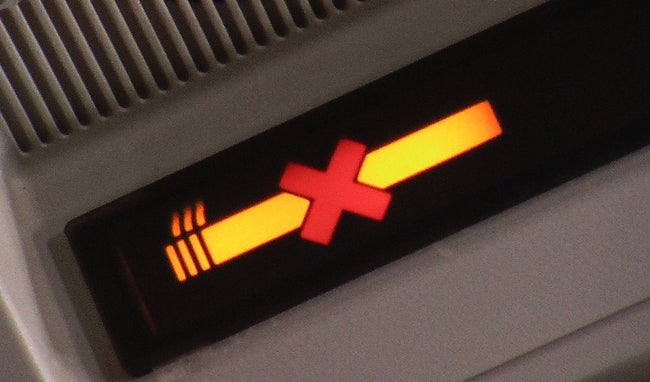
February 25, 1990 – Smoking is banned on all US domestic flights. Consumer protection advocate !!!error: Indecipherable SUB-paragraph formatting!!! was the first to call for a smoking ban on US airlines, and United was the first to implement a smoking section of their airlines in 1971. By April 1988, a smoking ban was instituted on flights of 2 hours or less, and by 1990, smoking was banned on all domestic flights of 6 hours or less. By 2000, the ban was further extended to all domestic and international flights. Smokers who violate the ban face a fine of up to $500 or 10 days in prison. Pilots, however, were allowed to continue smoking on the flight deck over safety concerns caused by nicotine withdrawal in chronic smokers. The FAA has yet to make a ruling on whether or not to allow vaping on airplanes. (Photo by Kashif Mardani via !!!error: Indecipherable SUB-paragraph formatting!!! )
!!! UNKNOWN CONTENT TYPE !!!
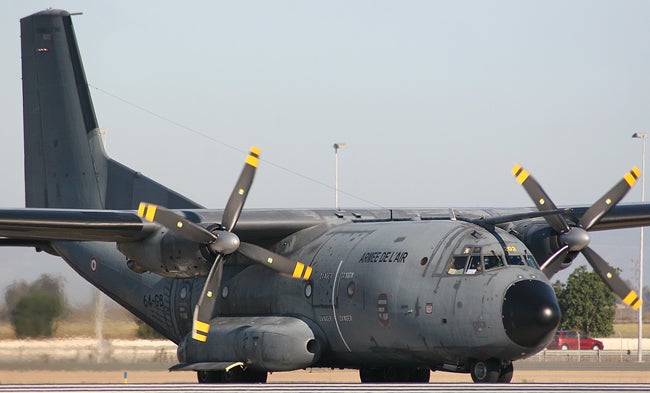
February 25, 1963 – The first flight of the Transall C-160, a twin-turboprop military transport and cargo aircraft designed as a joint venture between Germany and France. “Transall” is an acronym for Transporter Allianz, and the C-160 was developed to satisfy requirements that arose in the late 1950s for a new transport aircraft to replace the !!!error: Indecipherable SUB-paragraph formatting!!! . the Transall consortium was formed in 1959, and following a delay in production while Lockheed unsuccessfully marketed the !!!error: Indecipherable SUB-paragraph formatting!!! to Germany, the first production aircraft were delivered in 1967. The C-160 has become one of the few aircraft to see over 50 years of service, and 214 were built between 1965-1985. (Photo by Curimedia via !!!error: Indecipherable SUB-paragraph formatting!!! )
!!! UNKNOWN CONTENT TYPE !!!
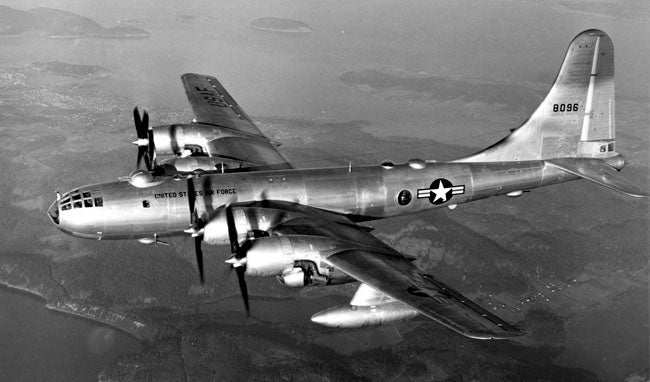
February 26, 1949 – Lucky Lady II takes off to complete the first non-stop circumnavigation of the globe.
The Lucky Lady II was a US Air Force
!!!error: Indecipherable SUB-paragraph formatting!!!
belonging to the
!!!error: Indecipherable SUB-paragraph formatting!!!
. At the time of its round-the-world flight, the B-50 still had all of its defensive armament, though the bomb bay was fitted with an additional fuel tank. Luck Lady II was manned by a double crew, and each crew flew in 6-hour shifts throughout the 94 hour flight. Departing from Carswell AFB in Texas, the aircraft flew an easterly route, was refueled by aerial tankers four times along the way, and returned to Carswell AFB on March 2. Each member of the crew was awarded the
!!!error: Indecipherable SUB-paragraph formatting!!!
.
(US Air Force photo)
!!! UNKNOWN CONTENT TYPE !!!

February 26, 1890 – The birth of Chauncey Milton Vought,
an American aviation pioneer, engineer, aircraft designer, and co-founder of the Lewis and Vought Corporation. The company he founded has gone through numerous associations: Lewis and Vought, Chance Vought, Vought Sikorsky, LTV Aerospace, Vought Aircraft Companies and Vought Aircraft Industries. Vought himself was not around to see the tremendous growth of the company he founded, nor did he see any of the remarkable aircraft the company built, such as the
!!!error: Indecipherable SUB-paragraph formatting!!!
. Vought died of
!!!error: Indecipherable SUB-paragraph formatting!!!
in 1930 at the age of 40. He was inducted into the
!!!error: Indecipherable SUB-paragraph formatting!!!
in 1989. (Photo via
!!!error: Indecipherable SUB-paragraph formatting!!!
)
!!! UNKNOWN CONTENT TYPE !!!
Recent Aviation History Posts
!!! UNKNOWN CONTENT TYPE !!!
!!! UNKNOWN CONTENT TYPE !!!
!!! UNKNOWN CONTENT TYPE !!!
!!! UNKNOWN CONTENT TYPE !!!
!!! UNKNOWN CONTENT TYPE !!!
If you enjoy these Aviation History posts, please let me know in the comments. And if you missed any of the past articles, you can find them all at
!!!error: Indecipherable SUB-paragraph formatting!!!
.
!!! UNKNOWN CONTENT TYPE !!!
 Rock Bottom
> ttyymmnn
Rock Bottom
> ttyymmnn
02/26/2016 at 13:48 |
|
I love these articles!
I also love the HE 111. It’s worth showing a pic of what these birds looked like early in production. They had a stepped (conventional) nose and cockpit in the -A through -J models. The -P was the first of the downright beautiful (and sinister) looking Heinkels!

 ttyymmnn
> Rock Bottom
ttyymmnn
> Rock Bottom
02/26/2016 at 13:54 |
|
Thank you, and thanks for reading. Thanks also for the additional information. I appreciate when readers add information that I didn’t have space for. The pace of aircraft development during the war, and for all of aviation history really, is truly astounding. That the He 111 was obsolete so soon after it was produced speaks volumes. But the Gernans never bought into the whole strategic bombing concept, opting for medium or tactical bombing instead. They never developed a heavy bomber like the B-17 or Lancaster. And really, one must question if strategic bombing was really all that effective.
 Rock Bottom
> ttyymmnn
Rock Bottom
> ttyymmnn
02/26/2016 at 18:33 |
|
The pace was fast in WW2, but WW1 was a whole order of magnitude faster! Front line fighter planes were completely worthless in months or even weeks!
And I can completely understand the challenge of balancing the size of your articles. You clearly love flying machines, which makes it super easy to go full “encyclopedia mode” and end up writing a book instead of a weekly recap! Keep up the awesome articles!
 gmporschenut also a fan of hondas
> Rock Bottom
gmporschenut also a fan of hondas
> Rock Bottom
02/27/2016 at 00:48 |
|

idk. ww2 started with biplanes being feilded by some of the major powers. hell the 109 was only the first gen metal plane and ended 6 years later
with this
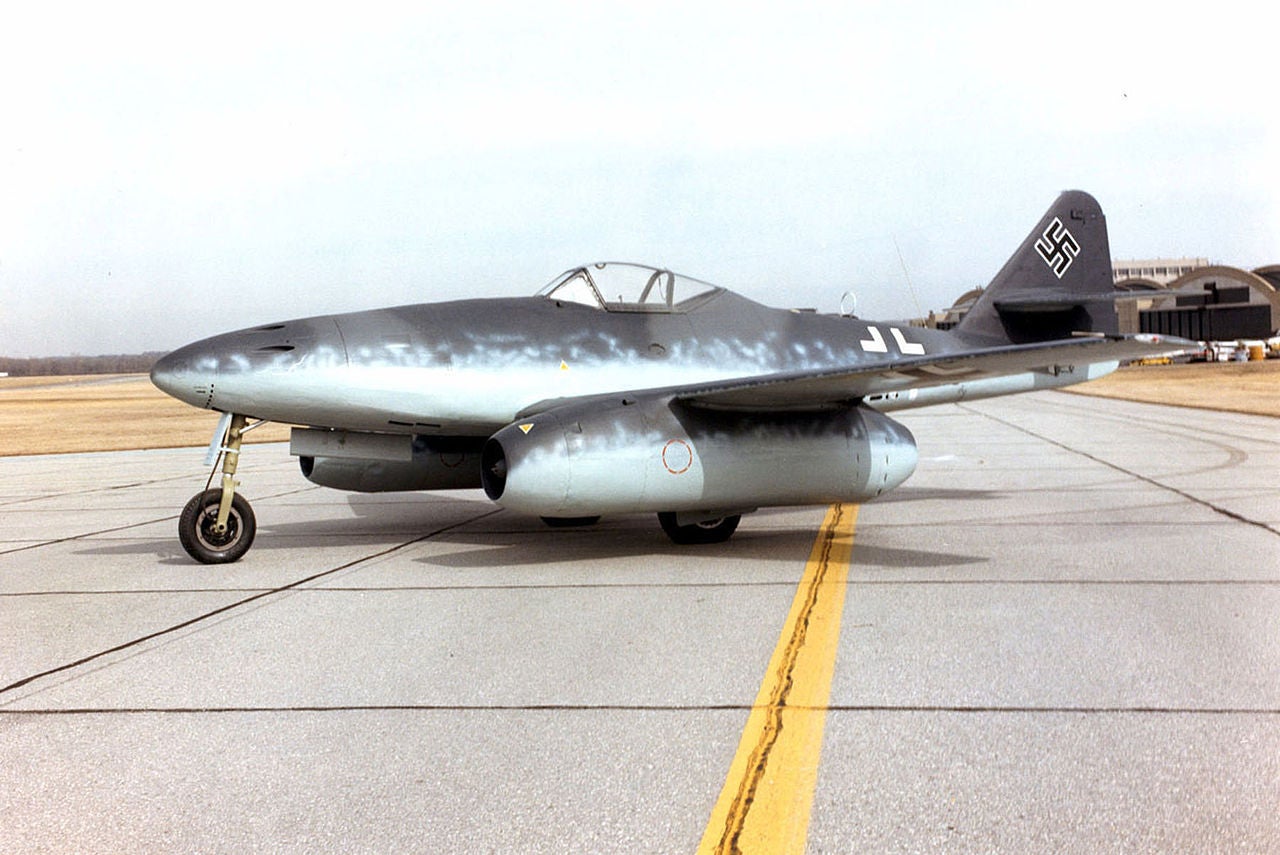
and this
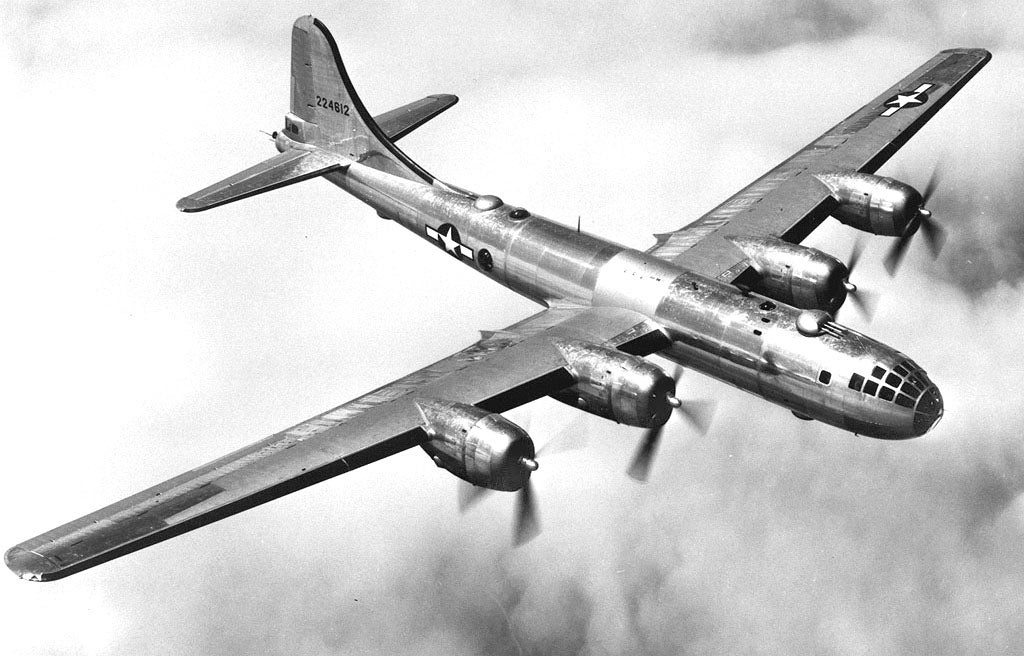
 facw
> ttyymmnn
facw
> ttyymmnn
02/27/2016 at 22:21 |
|
Strangest A-4 thing for me:
https://en.wikipedia.org/wiki/1965_Phil…
How lax were procedures that you could just let a plane, complete with pilot and nuclear bomb, roll off the ship?
 Rock Bottom
> gmporschenut also a fan of hondas
Rock Bottom
> gmporschenut also a fan of hondas
02/28/2016 at 16:24 |
|
I agree that it feels like engineering progressed faster in the 40s, but it was still entirely possible to keep an aircraft on the front lines for years in WW2 (like the A6M, BF-109, and Spitfire) without them being 100% useless. Granted, new and updated versions of the same-old-planes kept coming out, but they didn’t immediately relegate their predecessors to the scrap yard. In WW1, if your plane was a couple months old... you left it at home!
Etrich Taube and Albatros D.Va:
